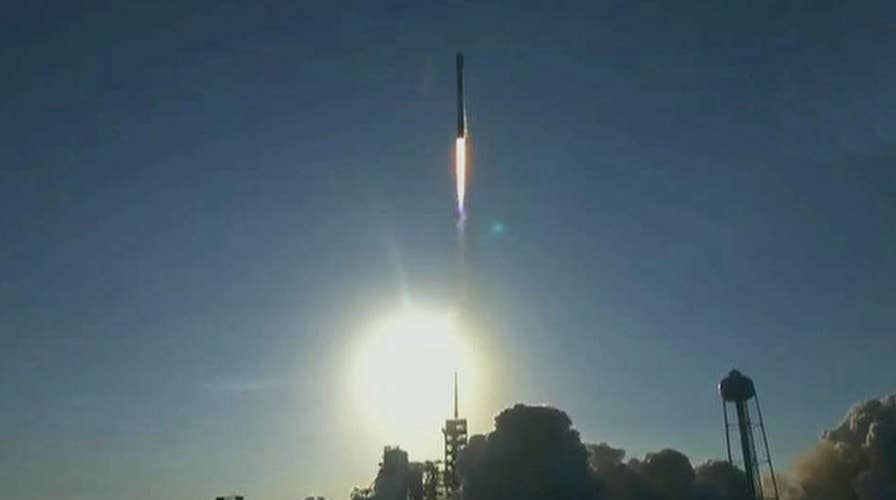SpaceX launches first-ever refurbished rocket
The launch is being hailed as a massive leap forward in the effort to make spaceflight more affordable
CAPE CANAVERAL, Fla. – Reboot, Reuse, ReLAUNCH!
The excitement, the eagerness and, in the end, the exuberance of the employees at SpaceX headquarters in Hawthorne, California was like the players on the field when they win the Super Bowl, going practically berserk with cheering and jubilation. And what SpaceX did Thursday night was arguably far, far bigger than winning the Super Bowl of the very competitive commercial space industry.
After a couple of years landing its spent booster rockets upright on a landing pad, Thursday night Space X used one of those same stage one rockets to launch again.
SPACEX CAPSULE RETURNS SPACE STATION SCIENCE TO EARTH
The University of Colorado’s Phil Larson, former President Barack Obama’s space advisor, likens it to flying the first airplane at Kitty Hawk.
"I think this is a huge deal for the space industry,” Larson said. “And it's not a stretch to say this is a Wright brothers moment. This has never been done before."
For the entirety of space history, almost always, the spent rocket dropped into the Atlantic Ocean and was left at the bottom of the sea. SpaceX CEO Elon Musk has equated this to spending hundreds of millions of dollars for a new 747, flying it from Los Angeles to New York once, and then throwing it away.
After last night’s relaunch of a reused rocket, Musk accomplished what he and his team have been trying to accomplish for 15 years.
"It means you can fly and re-fly an orbital class booster, which is the most expensive part of the rocket,” said Musk. “This is going to be, ultimately, a huge revolution in spaceflight.”
After the recycled first stage separated from the second-stage rocket Thursday night – sending an SES-10 telecommunications satellite into orbit – the first stage descended back to Earth and landed upright on SpaceX’s autonomous drone ship out in the Atlantic, a feat that’s called “supersonic retro propulsion.”
WORLD'S OLDEST SPACEWOMAN SETS SPACEWALKING RECORD
In 14 attempts to do that, SpaceX has succeeded nine times. Now that re-launching previously spent rocket boosters has been proven to be viable and successful, SpaceX intends to reuse rockets 20 to 30 times.
SpaceX’s Falcon 9 first-stage rockets contain all of the main engines and most of the fuel, making up at least 30 percent of the total cost to send something into space. For satellite companies using SpaceX rockets to launch their payload, this is estimated to bring down the mission cost from about $60 million to about $40 million.
“This will open up a whole new economy in space,” says Larson. “The commercial satellite industry is over $100 billion a year. A whole sector of private industry will benefit. If you can lower that cost to access space that dramatically, just think about where those dollars can be spent in inventing new technologies and giving money back to the consumer (and taxpayer.)”
STUNNING SPACEX ROCKET LANDING PHOTO GOES VIRAL
For future space tourists who aren’t super wealthy this could also significantly lower how much of your savings account it takes to take a rocket ride to micro-gravity.
The real key to SpaceX’s historic accomplishment is the rocket science of “supersonic retro propulsion,” taking a 14-story-tall rocket that’s screaming down range, re-igniting that rocket and then landing it upright on the bull’s eye.
Another commercial space company, Blue Origin, has done this five times in Texas in test flights. Other aerospace companies and countries across the world are also said to be trying to this strategy.
And this technology is absolutely necessary if we’re ever going to send a spaceship, astronauts and cargo to Mars, where parachutes won’t work.
“My mind’s blown, frankly,” said Musk at the post-launch-and-landing press conference. “Yes, I was really quite speechless after it all happened.”
